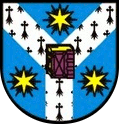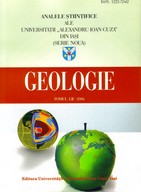The petrology of the peralkaline felsic lavas from the Ngaoundéré region was re-examined,
together with new chronological data obtained on them, in order to determine their petrogenesis
and investigate their peralkaline features. The results showed that all lavas have a microlitic
porphyritic texture. They are composed of more than 70% phenocrysts and microlites of alkali
feldspar, with diopside, hedembergite, augite, aegirine-augite for trachytes, and nosean,
nepheline, kaersutite, titanite, apatite and oxides¸ set in a matrix of the same minerals, in
phonolite. All lavas, Miocene in age, are the result of the fractional crystallization processes
undergone by the surrounding basaltic lavas. The titanite crystallization phase is responsible for
the concave downward appearance of the REE pattern of peralkaline phonolite, as well as the
slight depletion of Nb and Ta. AFC modeling using Pan-African basement rock as contaminant
was also intended. The genesis of peralkaline trachytes from less-evolved lavas requires a
Ma/Mc ratio of 0.1, and a fractionation process (F ≈ 0.9) involving only feldspar so as to comply
with the (87Sr/86Sr) 9Ma values of ≈ 0.710. Additionally, hydrothermal fluid effects are
suspected. The peralkalinity of the lavas is the result of a pronounced fractionation of the Al2O3
component by aluminous-enriched phases, in combination with alkali- and volatile-enriched
metasomatized fluids, which have acted through the network of Pan-African cracks.
Copyright © 2012 Published by Ed. Univ. „Al. I. Cuza” Iași. All rights reserved.

English title
- SERIA
GEOLOGIE (AUI-G) - |

|
| Log in New account |
| Home | Main Page | Guide for Authors | Peer Review | New Articles | Events | Archive | Index | Contact us |

|
Article Revised petrology and new chronological data on the peralkaline felsic lavas of Ngaoundéré volcanism (Adamawa plateau, Cameroon, Central Africa): evidence of open-system magmatic processes
Aminatou M. Fagny - University of Bamenda, Faculty of Sciences, Department of Earth Sciences, P.O. Box 39, Bamenda, Cameroon Oumarou F. Nkouandou - University of Ngaoundéré, Faculty of Sciences, Department of Earth Sciences, P.O. Box 454, Ngaoundéré, Cameroon Bernard Déruelle - Université “Pierre et Marie Curie”, Laboratoire de Magmatologie et de Géochimie Inorganique et Expérimentale, Paris 6, 75252 Paris, France Ismaila Ngounouno - University of Ngaoundéré, Faculty of Sciences, Department of Earth Sciences, P.O. Box 454, Ngaoundéré, Cameroon View abstract as pdf file | View full article as pdf file Abstract: Keywords: petrology, geochronology, peralkaline felsic lavas, crustal contamination,
Adamawa-Cameroon, Central Africa |
copyright © 2024 Department of Geology |